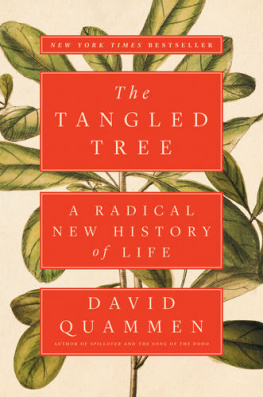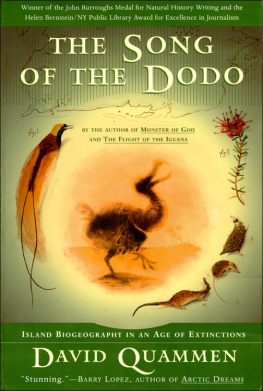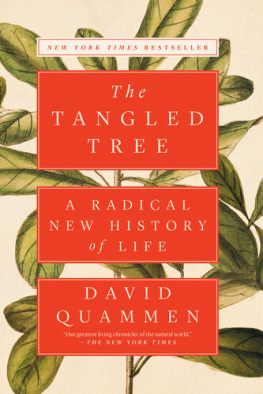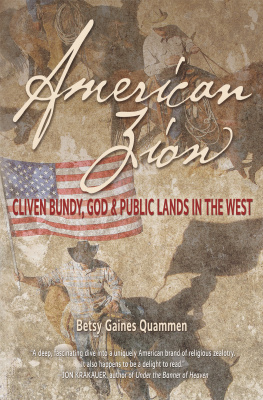
Contents
T O K AY AND S ALLIE
Introduction
The title of this book alludes to a scarce resource. Wild places, in the ordinary sense of that phrase, are in preciously short supply on planet Earth at the end of the twentieth century.
The great zones of forest and swamp have been reduced to small, tattered remnants of what they once were. The fiercest deserts have been split by roads and planted with artificial oases. The widest seas have been effectively narrowed, the highest mountains effectively lowered, the coldest polar regions made effectively warmer and more hospitable, not simply by adventurous human visitors but by the cultural and technological trappings that modern humans bring. For instance, nowadays you might step out of a dugout canoe at the Amazon headwaters and meet an Indian man wearing a red feather through his nose and a gimme cap reading O KLAHOMA S OONERS. You might gaze into the sky over the highlands of New Guinea and see a helicopter, bringing in two oil geologists along with their wall tent, their survey equipment, their Macintosh, and their food, including a two-month supply of Pringles. You might enter a little village caf on the island of Kosrae, in the southwestern Pacific, and find several local children watching the Three Stooges on a VCR. To a considerable degree, these and other wild places have been tamed.
Some people celebrate that factHooray, humanity conquers the wilderness, making life safer and more comfortable for everybody. Other people, including me, regret it. I suppose you could say: We have the luxury of regretting it. But thats a complicated argument, and not one I want to pursue here. My purpose at the moment is more modest: to welcome you to this book of ruminations, and to intimate a definition of wild places thats a little more stretchy and inclusive.
Wildness, in this broader sense, inheres in any geographical or emotional context that remains unpolluted by absolute safety and certainty. Take the foothills of Burbank, with their coyote populationas described in the essay here titled To Live and Die in L.A. Or the peculiar canyon ecology of midtown Manhattan, fostering evolutionary adaptations in the postmodern pigeonas described in Superdove on 46th Street. Or the death of a beloved curmudgeon named Edward Abbeyas described in Bagpipes for Ed. I can report finding a certain richly threatening wildness in each of those contexts, those geographical and emotional places, which Ive tried to share.
My own discovery of wildness, in the most discomfitingly personal sense, dates back about twenty-five years to an episode in the mountains of north-central Wyoming. The memory of that episode is indelible to me, though the story isnt especially dramatic. I had driven out west just after graduate school, in quest of purgation and a new life and trout. I was alone in my Volkswagen bus, carrying almost everything I owned, which consisted mostly of paperback books, a skillet, a pair of waders, and a fly rod, the last of which I was just learning to use. My life stretched before me as a mysterious, undifferentiated vista, like the plains of Nebraska at sunset, vacant of plan or intention except that I knew I wanted to write novels. I was reading War and Peace, in a two-volume Penguin edition, and my submersion in that book reflects the fact that for the first time since boyhood I had an abundance of free time. I was nearly broke, but my prospects and my liberty seemed boundless.
I camped for a week in the Bighorn Mountains, above Sheridan, living out of the bus and fishing a fork of the Tongue River that meandered past my campground. Since the stream was tiny and Id been sharing it with other fishermen, one day I decided to hike downstream a few miles to where it converged with another fork, far from any campground or road. (Consulting a map now, half a lifetime later, I see that those tributaries must have been the North Tongue and Fools Creek, the second of which seems apropos, in light of my behavior.) I jammed my waders into a day pack along with a canteen, matches, and a box of raisins, and carried my fly rod in my hand. Within a mile the trail evaporated and I found myself bushwhacking along the stream. Within two miles the route had become clotted with thick timber, underbrush, and deadfalls, interrupted occasionally by barricades of scree. The going had gotten slow, but I plodded on.
In midafternoon I passed an old derelict cabin and made a mental note of it. In late afternoon, fighting through brush, I reached the little confluencewhich turned out, disappointingly, despite the doubled volume of water, to offer no particularly good fishing spots. Trying a Black Gnat pattern and a few other flies, I caught nothing. The sun was now low and I was hungry. So I impaled a live grasshopper on a hook, dangled it into a pool too obstructed for me to hit with a cast, and landed a single small trout. Then I started walking out. Dusk caught me in the vicinity of the derelict cabin. By this time it was clear that Id better stay here for the night. I knew that busting the thickets and crossing the scree piles in darkness would be ugly work, and foolhardy; one bad step, one wet rock, and I could break a leg. And I realized, rather belatedly, that a broken leg under these circumstances could be fatal, since no one in the world knew within five hundred miles or three weeks where I might be. I had made no local friends; I had designed no fallback scenario. I was only a half dozen miles from a road, but I had never been more alone. Although Id been too stupid to think of that earlier, now I could think of nothing else. I had put myself into a context that, narrow as it was, trivial as its dangers might be, seemed as wild as any Ive ever known.
I built a fire. I cooked the trout on a stick, and it tasted delicious. The raisins were good too. I lay down on a plank bunk inside the cabin until the pack rats, crawling over my legs, spooked me. Then I went back outside and tried to sleep in my waders, thinking they would insulate me like a sleeping bag, but they were too wet and clammy. So I rebuilt the fire and curled up near it, scorching the elbow out of my dirty wool sweater. While I hunkered and shivered, the pack rats chewed sections from my fly line and hauled them away. In the morning, the glorious morning, I hiked out, placing each footstep with extraordinary care. Safely back at the trailhead, I was so giddy with relief that I let my fly rod fall in front of the Volkswagen bus and then drove over it.
This was my little baptism into a new life, a new set of perspectives, in the Wild West. The whole conversion experience is mentioned passingly in Synecdoche and the Trout, the first piece in this collection, and again in Strawberries Under Ice, the last. Its no coincidence that those two essays, concerning my own most beloved wild place, bracket the rest.
Between them lies a sampler of other travels, misadventures, small insights, research efforts, exercises in scientific explication and unscientific noodling, portraits of people who have fascinated and impressed me, sporting narratives, eulogies, reminiscences, valentines, warnings, second thoughts, and willful provocations, all of which have been previously published, mostly in magazines. The order in which theyre presented herewithin four loose wild-place rubrics, the River, the City, the Mountains, the Heartis not chronological, nor necessarily the order in which you should read them. Although theres a certain logical progression among some of the essays as arranged (familiarizing you with whitewater terminology from one essay to another within the River section, for instance, or with the peculiar character of telemark skiing from one essay to another within the Mountains), I invite you to jump around, dipping into the various sections as your tastes or your mood might dictate. The real point of even those river-washed and mountain-hung stories, after all, is not to convey athletic information but to offer some observations and thoughts about interesting people in intense situations.
Next page









